($40): 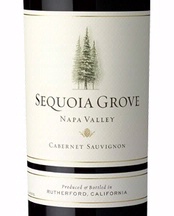 This wonderfully refined mineraly Cabernet Sauvignon is a pleasure to drink now. I’m certain it will gain complexity — though it has plenty now — and nuance with age, but the winemaking team at Sequoia Grove has polished the tannins so they provide necessary structure without a trace of astringency or roughness. … Read more
This wonderfully refined mineraly Cabernet Sauvignon is a pleasure to drink now. I’m certain it will gain complexity — though it has plenty now — and nuance with age, but the winemaking team at Sequoia Grove has polished the tannins so they provide necessary structure without a trace of astringency or roughness. … Read more
Category Archives: WRO Reviews
Finca San Blas, Utiel-Requena DO (Valencia, Spain) “Lomalta” 2014
($14):  The Denominación de Origen (DO) of Utiel-Requena in eastern Spain has traditionally been known for bulk wine from the prolific Bobal grape. Slowly, producers are changing the image. This robust red, a blend of Merlot, Bobal, Cabernet Sauvignon, Tempranillo and Syrah, has remarkably mild tannins, which makes it a good choice for hearty fare, even barbeque. … Read more
The Denominación de Origen (DO) of Utiel-Requena in eastern Spain has traditionally been known for bulk wine from the prolific Bobal grape. Slowly, producers are changing the image. This robust red, a blend of Merlot, Bobal, Cabernet Sauvignon, Tempranillo and Syrah, has remarkably mild tannins, which makes it a good choice for hearty fare, even barbeque. … Read more
Presqu’ile, Santa Maria Valley (Santa Barbara County, California) Sauvignon Blanc 2016
($26): Presqu’ile takes advantage of their location in the Santa Maria Valley, which is cooled by the influences of the Pacific Ocean, to focus on grapes that show their best in that kind of climate: Chardonnay, Pinot Noir and Sauvignon Blanc. … Read more
Presqu’ile, Santa Maria Valley (Santa Barbara County, California) Chardonnay 2015
($35): As I said in my review of Presqu’ile’s Pinot Noir, you can’t go wrong with their wines. It’s worth repeating. The first sip of this Chardonnay awakens your palate with restrained richness balanced by an enlivening citrus character. With air, more flavors emerge, but it still retains its vibrating soul. … Read more
Patz & Hall, Russian River Valley (Sonoma County, California) Chardonnay Dutton Ranch 2014
($44): Dutton Ranch, which consists of 1,100 acres of vineyards spread over the Russian River Valley that are owned or leased by the Dutton family, is a famous name in California wine. Lots of top name California producers buy grapes from Dutton, including Patz & Hall who has hit the mark with this 2014 Chardonnay.… Read more
Patz & Hall, Carneros (Napa Valley, California) Chardonnay Hudson Vineyard 2014
($55): Patz & Hall have long been known for making single vineyard Chardonnay and Pinot Noir by contracting with top growers for grapes from those vineyards. This one, from the Hudson Vineyard, which is wholly within the Napa Valley portion of Carneros, has lush generosity without being over the top or heavy. … Read more
Laurel Glen Vineyards, Sonoma Mountain (Sonoma County, California) Cabernet Sauvignon Estate 2013
($75): Laurel Glen, a true pioneering producer in Sonoma County, currently flies under most everyone’s radar. Under Bettina Sichel’s leadership, that’s slowly changing. Planted in 1968 by Carmen Taylor, Chateau St. Jean purchased grapes for their famed Lauren Glen Cabernet in the 1970s. … Read more
Cobb Vineyards, Sonoma Coast (Sonoma County, California) Pinot Noir Rice-Spivak Vineyard 2014
($75): Cobb’s Rice-Spivak Vineyard Pinot Noir (13.3 percent) is more floral and opulent compared to their Emmaline Ann bottling at this stage, but still impeccably balanced. Again, the flavors dance across the palate, leaving you wondering how such intensity can be so light. … Read more
Cobb Vineyards, Sonoma Coast (Sonoma County, California) Pinot Noir Emmaline Ann Vineyard 2014
($75): Ross Cobb has as much experience with Sonoma Coast vineyards as anybody, having worked at Williams Selyem, Flowers, and Hirsch, all notable Sonoma Coast producers. Ross, like Jadot’s legendary winemaker, Jacques Lardière who is currently making Jadot’s Oregon Pinot Noir, favors picking that grape earlier in the New World’s warmer vineyards (at least compared to Burgundy) to preserve secondary aromas and flavors that are essential to the character of the wine. … Read more
Cobb Vineyards, Sonoma Coast (Sonoma County, California) Pinot Noir Coastlands Vineyard 1906 Block Pommard 2014
($80): Cobb’s Coastlands Vineyard, “1906 Block Pommard” Pinot Noir is the “heavyweight” of this trio despite being the lowest in alcohol (12.5 percent), reminding us, yet again, that sometimes less is more with regard to ripeness, especially with this variety. The juicy Coastlands Vineyard displays more black fruit compared to the red fruit character of the Rice Spivak bottling. … Read more
Presqu’ile, Santa Maria Valley (Santa Barbara County, California) Pinot Noir 2015
($42): If you see a wine from Presqu’ile (pronounced “press-keel”) on a wine list or in your retailer’s shop, buy it. You’ll likely be very happy. Take this Pinot Noir, for example. The Santa Maria Valley is a superb locale for the so-called “cool climate” grapes, such as Pinot Noir and Chardonnay because the valley runs East-West. … Read more
Grgich Hills Estate, Napa Valley (California) Cabernet Sauvignon 2014
($72): As usual and as expected, Grgich Hills’ current release Cabernet Sauvignon is outstanding. I guess the question really is whether this producer can ever do anything wrong. Year after year, the team at Grgich Hills produces stunning, balanced wines from a slew of different varieties of grapes, even Zinfandel. … Read more
Raeburn, Russian River Valley (Sonoma County, California) Chardonnay 2015
($20): This is a wine that presents a problem for a wine critic. I personally do not care for the in-your-face character, which favors power over elegance. But it is well made and an excellent example of that style of Chardonnay, which I know many people adore. … Read more
Prà, Soave (Veneto, Italy) “Otto” 2016
($18): Prà, one of Soave’s top producers and one of those responsible for the region’s renaissance, makes several Soave. Their top wine is from a single vineyard, Montegrande and is a blend of Garganega (70%) and Trebbiano di Soave. This one, Otto, named after a border collie, is their basic Soave made entirely from Garganega and aged exclusively in stainless steel tanks. … Read more
Ruggeri, Prosecco Valdobbiadene Superiore DOCG (Veneto, Italy) “Giustino B Extra Dry” 2015
($28): It seems as though everything with bubbles is now called Prosecco. And not just in the U.S. I’ve ordered Prosecco in Italy, have been poured a glass from a bottle labeled sparkling Soave and have had the sommelier insist that it was “Prosecco.” … Read more
Viticcio, Chianti Classico Riserva (Tuscany, Italy) 2013
($24): Wines from the Chianti Classico region, which, remember is a distinct and more prestigious subzone of the greater Chianti area, continue to thrill. This one from Viticcio, a blend of Sangiovese (90%) with equal amounts of Merlot and Syrah, is very appealing even now, though its balance suggests more complexity will evolve over the next five or so years. … Read more
Donnafugata, Passito di Pantelleria DOC (Sicily, Italy) “Ben Rye” 2014
($30): Pantelleria, an island off the coast of Sicily that is closer to Africa than Rome, has the potential to produce wonderfully sweet wines. Donnafugata, one of Sicily’s top producers, consistently fulfills that potential with their Ben Rye, a wine made from the Muscat of Alessandria grape. … Read more
Tenuta Regaleali, Sicilia DOC (Sicily, Italy) Perricone “Guarnaccio” 2014
($17): Conte Tasca d’Almerita’s Tenuta Regaleali, one of Sicily’s leading producers, has shown the world repeatedly that Sicily can produce superb wine. To their credit, they do not rest on their laurels. This wine, only their third vintage, is a good example of their broad thinking. … Read more
Santa Maria La Palma, Vermentino di Sardegna DOC (Sardinia, Italy) “Blu” 2016
($15): Vermentino, Sardinia’s most planted grape variety, has become “hot.” Even the French are starting to use the Italian name instead of the French name, Rolle. Vermentino does best in a hot climate with proximity to the sea, which makes Sardinia a perfect locale. … Read more
G.D. Vajra, Langhe DOC (Piedmont, Italy) Freisa “Kyè” 2013
($41):  G.D. Vajra is one of Piedmont’s top producers. Their name on a label is a guarantee of quality. Freisa, on the other hand, is not so consistent. It is a close relative of Nebbiolo and, like that grape, it has a prominent tannic structure. … Read more
G.D. Vajra is one of Piedmont’s top producers. Their name on a label is a guarantee of quality. Freisa, on the other hand, is not so consistent. It is a close relative of Nebbiolo and, like that grape, it has a prominent tannic structure. … Read more
Sartarelli, Verdicchio dei Castelli di Jesi Classico Superiore (Marche, Italy) “Tralivio” 2015
($18): 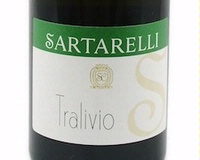 It’s easy to understand why Sartarelli, one of the region’s top producers, calls the wine Tralivio, which means around the olive trees, instead of using the tongue-twisting name of the DOC. Wines made from Verdicchio dei Castelli di Jesi are undergoing a renaissance as producers realize that the focus should be on quality over quantity. … Read more
It’s easy to understand why Sartarelli, one of the region’s top producers, calls the wine Tralivio, which means around the olive trees, instead of using the tongue-twisting name of the DOC. Wines made from Verdicchio dei Castelli di Jesi are undergoing a renaissance as producers realize that the focus should be on quality over quantity. … Read more
Tiberio, Trebbiano d’Abruzzo DOP (Abruzzo, Italy) 2016
($15): 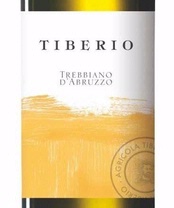 There are eight varieties of Trebbiano, according to Ian D’Agata, the world’s foremost authority on Italian grapes, which results in great confusion because they are certainly not all the same. This wine is made from Trebbiano Abruzzese, not to be confused with the more pedestrian Trebbiano Toscana. … Read more
There are eight varieties of Trebbiano, according to Ian D’Agata, the world’s foremost authority on Italian grapes, which results in great confusion because they are certainly not all the same. This wine is made from Trebbiano Abruzzese, not to be confused with the more pedestrian Trebbiano Toscana. … Read more
Cadaretta, Columbia Valley (Washington) “SBS” 2015
($23): Cadaretta has consistently excelled with their SBS bottling, using the initials of the grapes to name this wine. A Bordeaux-like blend of Sauvignon Blanc (90%) and Semillon, it’s a balanced, harmonious wine. The addition of Semillon adds a lanolin-like texture and depth without eviscerating the pleasant pungency of Sauvignon Blanc. … Read more
Stewart Cellars, Sonoma Mountain (Sonoma County, California) Chardonnay 2015
($40): I had no familiarity with Stewart Cellars until I tasted this Chardonnay. The winery is clearly now on my radar screen. It should be on yours. This is a show-stopping Chardonnay — not because of its power, but because of its stylish elegance. … Read more
Stewart Cellars, Napa Valley (California) Sauvignon Blanc 2016
($25): Founded in only 2000, Stewart Cellars buys grapes from growers they respect. This Sauvignon Blanc comes from the Stanly Ranch Vineyard in Napa Valley. A judicious use of oak imparts a hint of creaminess that balances the bite of Sauvignon Blanc without eviscerating it.… Read more
Freemark Abbey, Napa Valley (California) Sauvignon Blanc 2016
($25): Who knew that Freemark Abbey made excellent Sauvignon Blanc? Of course, they are an iconic producer of Cabernet Sauvignon and some incredibly lush sweet wines. It’s crisp and laser-like, with a snappy bite that is not aggressive. Plenty of body and depth balances its knife-like cutting edginess. … Read more
Shooting Star, Mendocino County (California) Chardonnay 2015
($14): Consumers looking for wines that over deliver for the price should embrace Jed Steele’s Shooting Star label. Steele, known for nuance rather than over the top opulence in his Chardonnay, maintains that style with this one. A hint of pineapple-like tropical fruit flavors are kept in check and balanced by wonderfully racy acidity. … Read more
Shooting Star, Lake County (California) Sauvignon Blanc 2016
($14): Renowned California winemaker Jed Steele is behind the Shooting Star. Steele buys grapes and wines from others, blends, ages and bottles them under this label. His talents at blending shine in this well-priced Sauvignon Blanc. It’s a nicely balanced compromise combining the lively bite of Sauvignon Blanc with the barest hint of fleshiness, which tames the potentially aggressive nature of the grape. … Read more
Stewart Cellars, Sonoma Mountain (Sonoma County, California) Rosé 2016
($28): 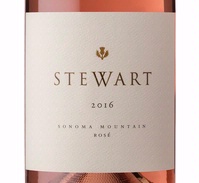 As regular WineReviewOnline readers know, I’d usually prefer a chilled light red wine to the vast majorities of innocuous rosé on the market. Here’s an exception — perhaps because it tastes like a light red because of a touch of tannin in finish.… Read more
As regular WineReviewOnline readers know, I’d usually prefer a chilled light red wine to the vast majorities of innocuous rosé on the market. Here’s an exception — perhaps because it tastes like a light red because of a touch of tannin in finish.… Read more
Luce, Brunello di Montalcino (Tuscany, Italy) 2012
($110, Folio Wine Imports): 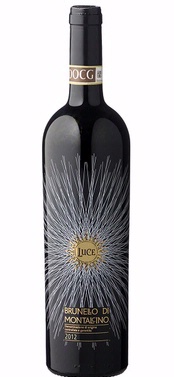 Luce della Vite, usually referred to as “Luce,” initially was a joint venture of the Mondavi and Frescobaldi families but is now owned solely by Frescobaldi. A Super Tuscan blend of roughly equal parts Sangiovese and Merlot grown in the Montalcino area, it does not conform to Italian winemaking regulations and therefore carries the IGT designation. … Read more
Luce della Vite, usually referred to as “Luce,” initially was a joint venture of the Mondavi and Frescobaldi families but is now owned solely by Frescobaldi. A Super Tuscan blend of roughly equal parts Sangiovese and Merlot grown in the Montalcino area, it does not conform to Italian winemaking regulations and therefore carries the IGT designation. … Read more
Attems, Venezia Giulia IGT (Italy) Pinot Grigio “Ramato” 2015
($18, Folio Fine Wine Partners): At first blush — no pun intended — you’d think this wine was a marketing genius, encompassing two very hot wine categories: Pinot Grigio and Rosé. But no, the pink — actually copper hue — of the wine comes from the light red color of the skins of the Pinot Grigio grape. … Read more
Château des Jacques, Fleurie (Burgundy, France) 2015
($28, Kobrand Wine & Spirits): 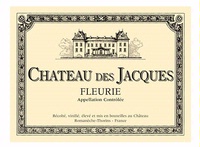 This Fleurie comes from two sites within the village. (Jadot has yet to make a single vineyard wine from Fleurie.) One site is at a higher elevation and cooler, which Cyril Chirouze, Château des Jacques’ winemaker, says provides grapes that impart elegance to the wine, while the other warmer site provides power. … Read more
This Fleurie comes from two sites within the village. (Jadot has yet to make a single vineyard wine from Fleurie.) One site is at a higher elevation and cooler, which Cyril Chirouze, Château des Jacques’ winemaker, says provides grapes that impart elegance to the wine, while the other warmer site provides power. … Read more
Ornellaia, Bolgheri Superiore (Tuscany, Italy) 2014
($175, Folio Wine Imports): 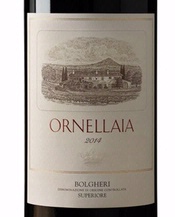 Axel Heinz, Ornellaia’s winemaker, described 2014 as a vintage that was “challenging for reds.” He continued, “One thing we can rely on in Bolgheri is summer — but not in 2014.” The weather in July and August was dreadful — cool and rainy — which meant that in many sites, even some of the very best ones, the grapes did not achieve full ripeness. … Read more
Axel Heinz, Ornellaia’s winemaker, described 2014 as a vintage that was “challenging for reds.” He continued, “One thing we can rely on in Bolgheri is summer — but not in 2014.” The weather in July and August was dreadful — cool and rainy — which meant that in many sites, even some of the very best ones, the grapes did not achieve full ripeness. … Read more
Planeta, Cerasuolo di Vittoria DOCG (Sicily, Italy) 2015
($21, Palm Bay International): A harmonious blend of Nero d’Avola (60%) and Frappato, Planeta consistently makes an excellent example of Cerasuolo di Vittoria, Sicily’s sole DOCG wine. The 2015 delivers a mixture of lovely cherry-like and mineral flavors wrapped in mild finely polished tannins. … Read more
Château des Jacques, Moulin-à-Vent (Burgundy, France) 2015
($28, Kobrand Wine & Spirits): This Moulin à Vent combines the best of Fleurie and Morgon. It’s remarkably fresh and approachable with juicy fruitiness and deep mineral-like flavors. You can almost taste the granite soil. It has less spice compared to the 2015 Château des Jacques Morgon, but silkier tannins. … Read more
Château des Jacques, Morgon (Burgundy, France) 2015
($28, Kobrand Wine & Spirits): 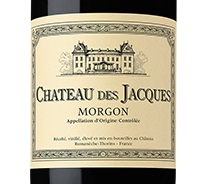 Anyone who doubts that Beaujolais can excite needs to taste Château des Jacques’ 2015 trio of Morgon, Fleurie and Moulin-à-Vent, three of the 10 Beaujolais crus. The crus are 10 villages in the northern part of the region whose bedrock is either pink granite or a blue-black volcanic stone and whose wines are so distinctive that only the name of the village, not Beaujolais, appears on the label. … Read more
Anyone who doubts that Beaujolais can excite needs to taste Château des Jacques’ 2015 trio of Morgon, Fleurie and Moulin-à-Vent, three of the 10 Beaujolais crus. The crus are 10 villages in the northern part of the region whose bedrock is either pink granite or a blue-black volcanic stone and whose wines are so distinctive that only the name of the village, not Beaujolais, appears on the label. … Read more
Codorníu, Cava (Penedes, Spain) Gran Reserva Brut “Jaume” 2012
($60): It should come as no surprise that Codorníu, still a leader in Cava production and the company essentially responsible for creating the category, should produce a show-stopping wine. In this Gran Reserva, one of their top bottlings, they use an unusual blend — at least for Cava — of Chardonnay, Pinot Noir and Xarel-lo. … Read more
Pieropan, Soave Classico (Veneto, Italy) La Rocca 2014
($35): 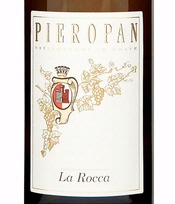 Soave is back. Wines from this northeastern part of Italy used to rank with Chianti as America’s favorite Italian wine. Predictably, as popularity rose, quality slipped and Soave was all too often an innocuous white wine. No longer. Producers focused on quality have returned Soave to its rightful place in the world of wine. … Read more
Soave is back. Wines from this northeastern part of Italy used to rank with Chianti as America’s favorite Italian wine. Predictably, as popularity rose, quality slipped and Soave was all too often an innocuous white wine. No longer. Producers focused on quality have returned Soave to its rightful place in the world of wine. … Read more
Zenato, Lugana (Veneto, Italy) “San Benedetto” 2016
($17, Winebow): Lugana, a tiny appellation on the southern side of Lake Garda, is having a renaissance and Zenato, one of the area’s largest and best producers, has been responsible for it. These zesty white wines are made primarily from the Turbiana grape (a.k.a.… Read more
Villa Bucci, Castelli di Jesi Verdicchio Classico Riserva DOCG (Marche, Italy) 2013
($49): 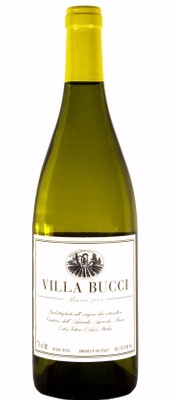 A tiny — just over 350 acres — DOCG, Castelli di Jesi Verdicchio Classico Riserva was carved out of the larger Verdicchio dei Castelli di Jesi DOC in 2010. (They changed the name — putting the geographic name, Castelli di Jesi, before Verdicchio, the name of the grape — a year later, in 2011.)… Read more
A tiny — just over 350 acres — DOCG, Castelli di Jesi Verdicchio Classico Riserva was carved out of the larger Verdicchio dei Castelli di Jesi DOC in 2010. (They changed the name — putting the geographic name, Castelli di Jesi, before Verdicchio, the name of the grape — a year later, in 2011.)… Read more
Bérêche & Fils, Champagne (France) Brut Réserve NV
($46):  So-called grower Champagnes, those made from one person’s or family’s vineyards, are all the rage. I recommend this one, not because it is a grower Champagne, which it is, but because of its suave complexity. Making Champagne from a limited number of family vineyards is a two-edged sword. … Read more
So-called grower Champagnes, those made from one person’s or family’s vineyards, are all the rage. I recommend this one, not because it is a grower Champagne, which it is, but because of its suave complexity. Making Champagne from a limited number of family vineyards is a two-edged sword. … Read more
Gundlach Bundschu, Sonoma Coast (Sonoma County, California) Chardonnay 2015
($27): This is a nicely balanced Chardonnay that expresses both a subtle fruitiness and spice. Bright acidity keeps it lively and fresh. The location of the vineyards in a cooler area — the Sonoma Coast — helps account for the refined, not overblown, style. … Read more
Jordan, Russian River Valley (Sonoma County, California) Chardonnay 2015
($32): 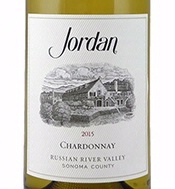 Jordan makes just two wines, this Chardonnay and a Cabernet Sauvignon, which may help explain why they are so consistently excellent. It also helps that they have never strayed from their style — favoring elegance and finesse over shear power. … Read more
Jordan makes just two wines, this Chardonnay and a Cabernet Sauvignon, which may help explain why they are so consistently excellent. It also helps that they have never strayed from their style — favoring elegance and finesse over shear power. … Read more
J. Lohr, Arroyo Seco (Monterey County, California) Chardonnay “October Night” 2015
($25): J. Lohr’s October Night Chardonnay is riper compared to the Arroyo Vista bottling — but still not too ripe — with a pronounced floral component, which would allow you to drink a glass before dinner. But, similar to the Arroyo Vista, it, too, has vibrancy in the finish that makes it a good choice at the dinner table.… Read more
J. Lohr, Arroyo Seco (Monterey County, California) Chardonnay “Arroyo Vista” 2015
($25): J. Lohr was one of, if not the first, to embrace Arroyo Secco appellation of Monterey County when he planted vines there in 1972. His experience has allowed him to differentiate vineyards within the appellation. This Chardonnay from Arroyo Vista vineyard is clearly different from the one labeled October Night — it’s not just a marketing gimmick. … Read more
Vignamaggio, Chianti Classico (Tuscany, Italy) Terre di Prenzano 2015
($22, Montcalm Wine Imports): This is quintessential Chianti Classico — remember Chianti Classico is one of the prized subzones of the Chianti region — with bright fruitiness, a touch of herbal flavors and lip-smacking acidity that compels another sip. The richness of the 2015 vintage is apparent, but the team at Vignamggio avoids jamminess or overripe character. … Read more
Sweetzer Cellars, Santa Maria Valley (Santa Barbara County, California) Chardonnay Presqu’ile Vineyard 2014
($40): 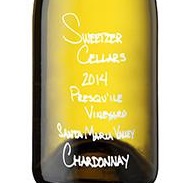 For this zesty Chardonnay, Sweetzer purchased grapes from Presqu’ile Vineyard. They aspire — and have achieved — a Chablis styled wine that is both slightly creamy and steely. It’s a hard combination to master, but Sweetzer has. The uplifting finish belies the 14.4 percent stated alcohol. … Read more
For this zesty Chardonnay, Sweetzer purchased grapes from Presqu’ile Vineyard. They aspire — and have achieved — a Chablis styled wine that is both slightly creamy and steely. It’s a hard combination to master, but Sweetzer has. The uplifting finish belies the 14.4 percent stated alcohol. … Read more
Dry Creek Vineyard, Russian River Valley (Sonoma County, California) Chardonnay Estate Block 10 2015
($32): This wine represents a dilemma for wine critics. It’s not a style of Chardonnay that I like personally, but it is well made and will appeal to a broad range of consumers, especially those who prefer bold Chardonnay. The wine making team used the usual techniques for amping-up the profile: Ripe grapes translating to a 14.5 percent-stated alcohol, fermentation and aging in the barrel, and malolactic fermentation (which converts harsher malic acid to a creamier lactic acid). … Read more
Flying Goat Cellars, Santa Barbara County (Central Coast, California) Brut 2013
($42): Norm Yost, owner of Flying Goat Cellars, was either crazy or a visionary when he was the first to make a sparkling wine in Sta. Rita Hills in 2005. Now there are more than 30 producers who have followed him, so you can draw your own conclusions. … Read more
Flying Goat Cellars, Sta. Rita Hills (Santa Barbara County, California) Pinot Noir Rio Vista Vineyard “2A” 2012
($42): 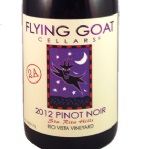 Norman Yost, owner and winemaker of Flying Goat Cellars, acquired detailed knowledge of the vineyards of Santa Barbara County when he worked for Foley Estates, one of the region’s largest producers. Now, making his own wine, he knows from whom to buy grapes. … Read more
Norman Yost, owner and winemaker of Flying Goat Cellars, acquired detailed knowledge of the vineyards of Santa Barbara County when he worked for Foley Estates, one of the region’s largest producers. Now, making his own wine, he knows from whom to buy grapes. … Read more
